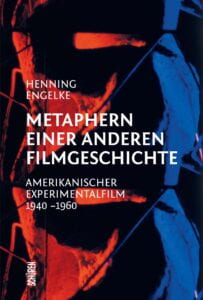Here’s the NYU Orphan Film Symposium session entitled “. . . and its Discontents,” parts 1 and 3 of 3. Recorded June 17, 2022, at Concordia University. 37 minutes.
DeeDee Halleck (UC San Diego emerita) and Henning Engelke (Philipps U Marburg), Incarcerated Youth: The Otisville Film Club, 1969-1972, with screening of
• A Madman’s World (Kenneth Brown & Charles Smith, 1971)
• The Bloody Crime Crusher (John Vann & James Spann, 1971)
Liz Miller (Concordia U) moderator
Click to enlarge or watch at vimeo.com/739282562
Video of the Q&A session is here. 27 minutes.
Abstract: This screening/presentation looks at films made between 1969 and 1972 by youth detained in the Otisville School for Boys. The films were made in the Otisville Film Club, initiated and directed by DeeDee Halleck. Using techniques of progressive education, Halleck sought to create an “open classroom,” providing a rich multi media environment that enabled students to feel empowered and safe to express themselves, and to share their feelings and creative ideas with others. The rest of their lives were under strict control by often repressive guards. Considering these films as significant creative work, we discuss how counter-archival practices can redress policies of preservation and access, and the long film historical neglect of youth media. We also consider alternative media practices: how the films were used 1) to be shared with the filmmakers’ peers, 2) to express emotions and attitudes towards the institution in which the youth were placed, and 3) to communicate with adult workers – teachers, administrators, wardens – and the surrounding rural communities.
Available for distribution to youth facilities throughout New York State, the films were shown at local libraries, churches, rotary clubs and other local institutions. The films have not been seen in this era of mass incarceration. Deep and moving aesthetic achievements, they are examples for positive media involvement. They represent the underrepresented lives, aspirations, and fantasies of incarcerated youth, and also their astute reflections on the carceral system. The Bloody Crime Crusher and A Madman’s World stand in for the collaborative body of work created at Otisville.
The films have not been seen in this era of mass incarceration. Deep and moving aesthetic achievements, they are examples for positive media involvement.
DeeDee Halleck is a media activist, a filmmaker, a teacher, a gardener, an author, a grandmother and a visionary. She taught filmmaking in a New York state youth facility and at the University of California San Diego. She led workshops in Harlem, the Women’s House in Barcelona and with Shirley Clarke’s Video Space Troupe. Founder in 1981 of the media collective Paper Tiger Television, she is also co-founder in 1986 of Deep Dish TV satellite network. Halleck’s first film was Children Make Movies (1961), about a project at New York’s Henry Street Settlement. She directed the follow-up Mural on Our Street (1965), which was nominated for an Academy Award as Best Short Documentary.
Henning Engelke is a German Research Foundation Fellow in the Department of Media Studies at Philipps University Marburg. His research focuses on intersecting histories of nonfiction film, experimental film, film activism, and young filmmakers projects. His recent publications include Metaphern einer anderen Filmgeschichte: Amerikanischer Experimentalfilm, 1940–1960 [Metaphors of Another Film History] (Marburg: Schueren, 2018).

